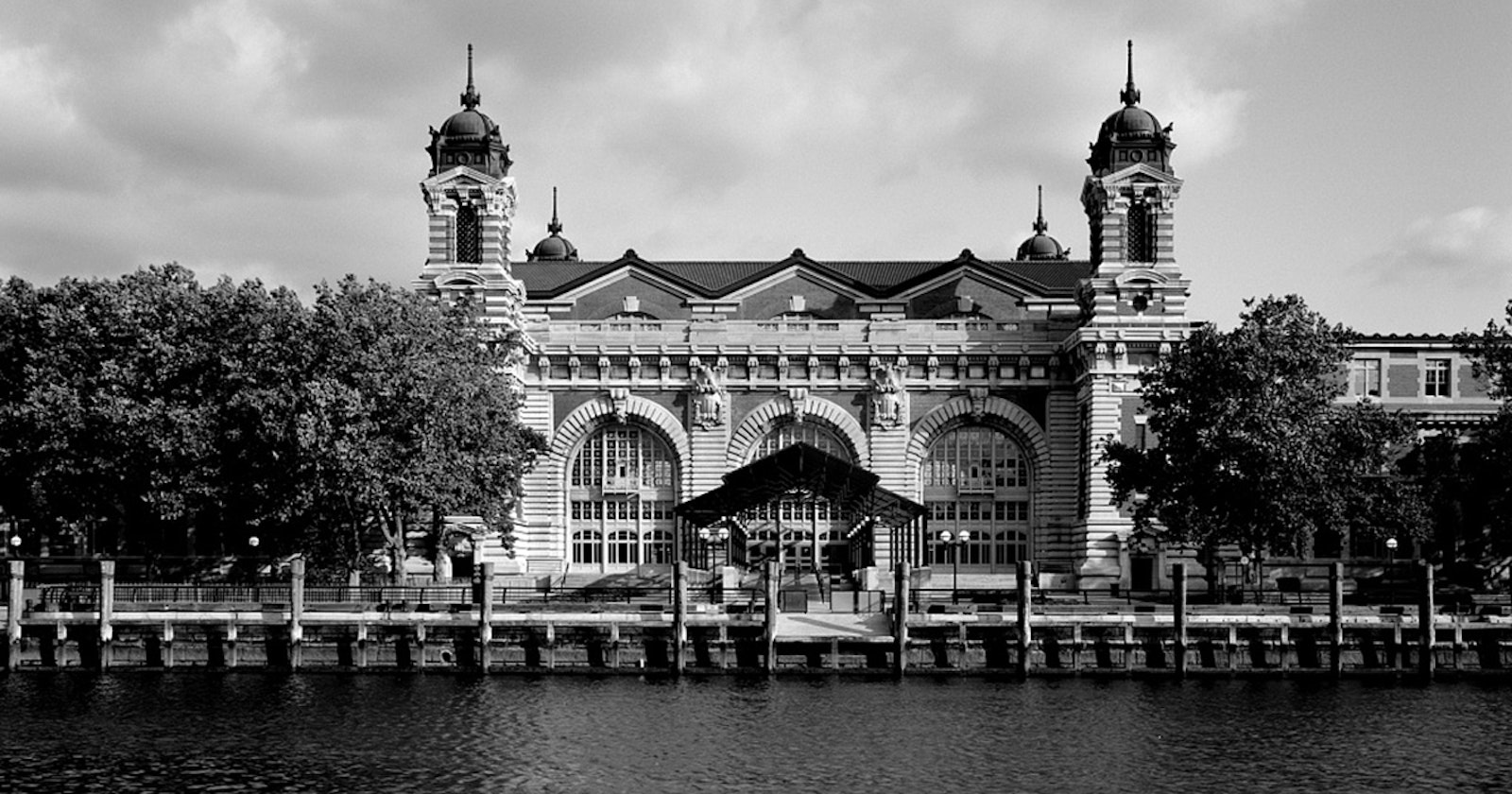September 10, 1990
The Ellis Island Immigration Station reopens after extensive restoration and becomes the Ellis Island Immigration Museum. The number of immigrants coming through Ellis Island declined severely following the passage of the Immigration Act of 1924. By 1949, the U.S. Coast Guard occupied most of the island. In November 1954, Ellis Island was abandoned.
Here’s the needlework connection to this date:
Of the 151 issues of PieceWork published to date, the September/October 1996 edition is a tour de force. The Treasures from Home exhibition at the Ellis Island Immigration Museum inspired this special issue—Crafts & Stories from Ellis Island. Here is an excerpt from Deborah Cannarella, then a PieceWork contributing editor:
Ellis Island between 1907 and 1921. Photo courtesy of the Library of Congress, Prints and Photographs Division.
- Ellis Island Treasures: What They Carried From 1892 to 1924, the peak years of immigration through the New York port of Ellis Island, more than twelve million people left their homeland and crossed the ocean to build a better life in the New World. They poured into the great melting pot that has come to be synonymous with the character of America. Their stories and struggles are part of the great epic tale of the country. Some came willingly and eagerly; others had no choice. Some had not intended to stay; others would never have dreamed of going back.
- They carried with them—in satchels, bundles, trunks, and sacks—things of the hands and of the heart. These emblems of the lives and loves they left behind became the cornerstones of the lives and loves they would build here. . . . We began by asking Geraldine Santoro of the Ellis Island Immigration Museum to send a letter on our behalf to the donors of nearly forty textiles in the museum’s exhibit, inviting them to participate in this special issue. . . .
- Each person had a different story to tell and responded to our invitation in a different way. People sent scraps of papers, letters, old newspaper clippings, and original family photographs, many of which were more than 100 years old. Many talked about the food and water, the medical examinations, the reunions with loved ones. The memories were often vague, ghostlike, fading in and out, details obscured by time and emotion, but the loved objects provided an anchor, confirming the experience.
- The personal stories, themselves like fragile pieces of cloth, together make up the quilt that is this issue yet that represents only a tiny fragment of the immigration experience. We present these personal histories much as they were told to us. You will hear a medley of voices as diverse as the cultures they came from, the experiences of arrival and settlement, and the objects they carried with them.
Textile artist and PieceWork contributor Nell Znamierowski is one of the Ellis Island Issue storytellers. Nell’s mother, Helen Wojnar Znamierowski, arrived at Ellis Island in 1931 from Skoczów, Poland. Helen was a master needleworker as the examples of her work shown here illustrate. A tutorial on drawn-thread work, one of Helen’s preferred techniques, is included in the September/October 1996 issue. For more on Nell’s mother and her exquisite needlework, see “After Ellis Island” and “The Polish Trunk” in the November/December 2012 and November/December 2014 issues of PieceWork, respectively.
A pink blouse with drawn-thread work, bullion stitch embroidery, and a drawn-thread work insertion and a slip with cutwork eyelet petal design and a drawn-thread work lattice made by Nell Znamierowski’s mother, Helen Wojnar Znamierowski, in the 1920s. Photo by Joe Coca.
In 2015, the Ellis Island Immigration Museum, which is in the Immigration Station’s main building, was rechristened as the Ellis Island National Museum of Immigration. For information on visiting, see https://libertyellisfoundation.org/visiting-ellis-island. Visit https://libertyellisfoundation.org/passenger to see if one of your relatives arrived via Ellis Island.
A gorgeous cutwork tablecloth with tatted edging started by Nell Znamierowski’s mother, Helen Wojnar Znamierowski, in Poland and finished after she arrived in the United States. 1920s–1930s. Collection of the author. Photo by Joe Coca.
To each person who contributed to the September/October 1996 issue of PieceWork, to their relatives, and to those who donated family textiles to the museum, thank you.
—Jeane
Featured Image: Main processing center at Ellis Island Immigration Station. Photo by Carol M. Highsmith and courtesy of the Carol M. Highsmith Archive, Library of Congress, Prints and Photographs Division.




